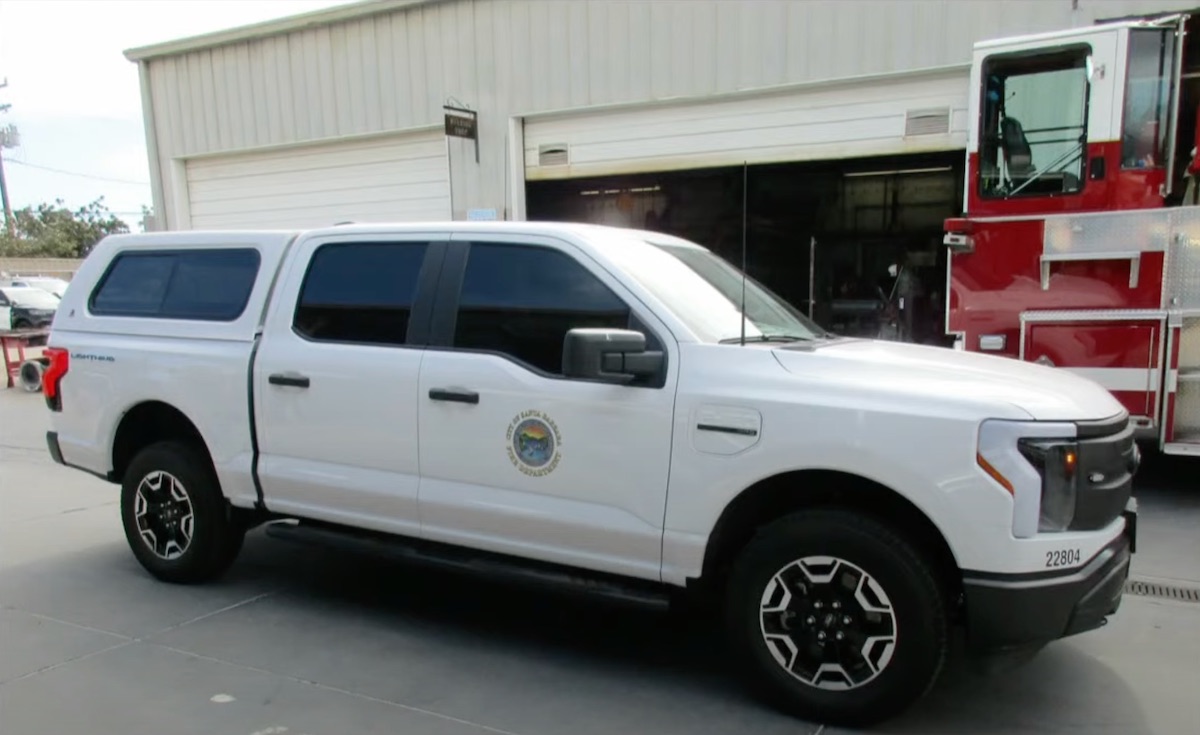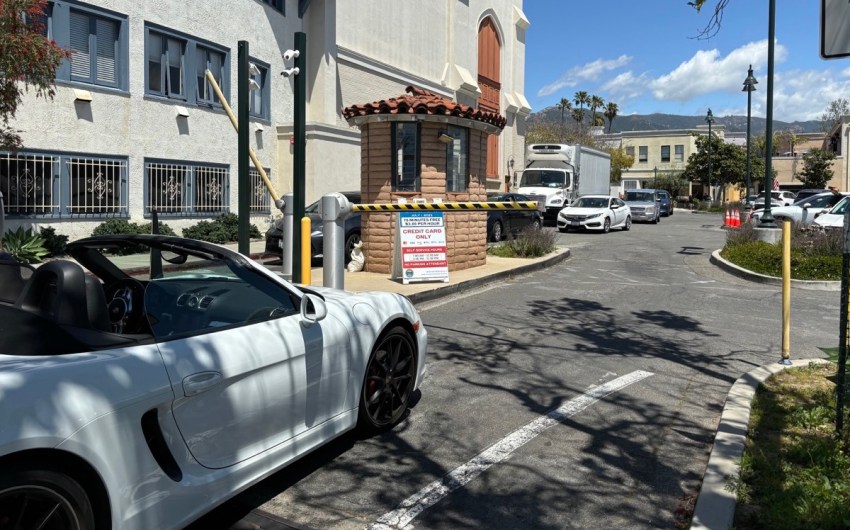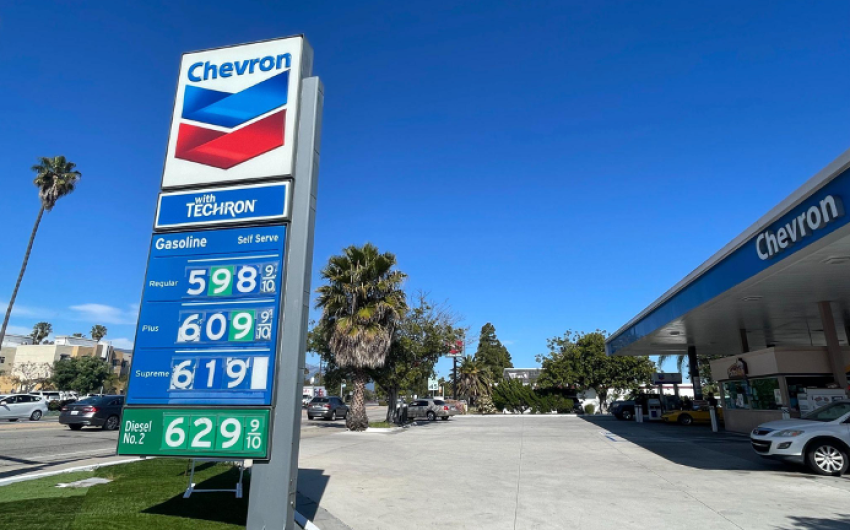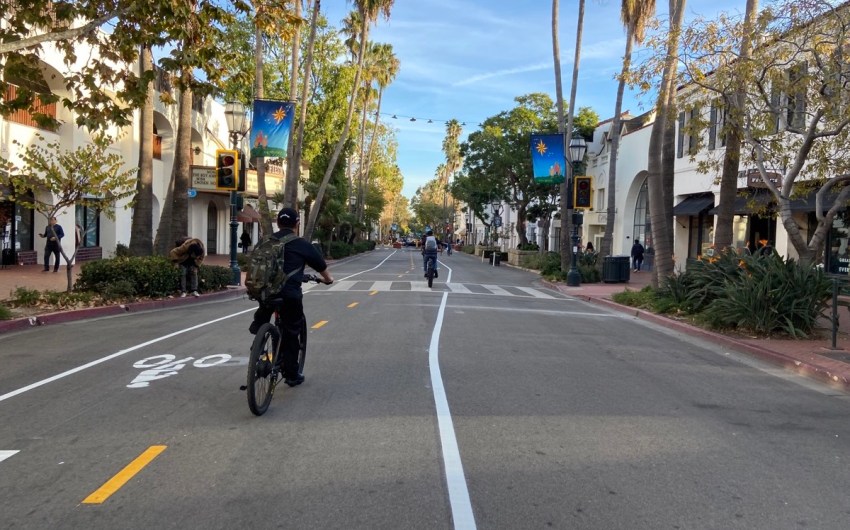Santa Barbara’s Push for Zero-Emission Vehicles Hits Harsh Reality
City and State Want to Go Electric, but Industry Hasn’t Provided Proper Work Truck Alternatives

The City of Santa Barbara has set a goal to be carbon neutral by 2035 — a full 10 years before the statewide goal — but while public policy is pushing toward environmental innovation, the available technology on the market is lagging behind, according to the latest report on zero-emission vehicles presented to the Santa Barbara City Council on Tuesday.
Public Works Director Cliff Maurer and the city’s Interim Facility and Fleet Manager Adam Hendel provided an update on the city’s policy on zero-emission vehicles and the California Air Resource Board’s (CARB) recently implemented Advanced Clean Fleets Regulation, which were both passed in an effort to shift municipal fleets toward cleaner electric vehicles.
The statewide regulation took effect on January 1, while the city’s own policy was passed in March 2023, and essentially the policies require that the city “prioritize” purchasing electric vehicles when possible. The city must also make sure that half of its new or replacement vehicle purchases are electric.
“Public works is very committed to transforming our fleet to the lowest carbon emission fleet we can possibly make,” Maurer said. “With the new law, of course we will do our level best to comply.”
But the industry is not quite ready to accommodate the need for true electric work trucks, Maurer explained, and with only a few smaller models available on the wider market — mainly the Ford F150 Lighting and Chevy Silverado EV Work Truck — the city has experienced some “significant challenges” making the switch to zero-emission vehicles.
“We’re not alone in this,” Maurer said. “Every agency is having the same concerns.”
Currently, the city’s fleet has 396 vehicles, with about 171 of those vehicles coming in over 8,500 pounds. Vehicles larger than that size are particularly difficult to replace with the types of electric trucks currently being made.
It’s not just the cost. While the price tag of electric vehicles is much higher than standard vehicles — $65,000 compared to about $36,000 for a work truck — the cost evens out when maintenance and fuel are factored in over time. A standard vehicle requires an average of $44,000 in maintenance and $16,000 in fuel over its lifetime, while an electric vehicle will cost about $25,000 in maintenance and $7,000 in charging costs. In the end, with all costs factored in, both would cost the city the same total of about $96,000.
The biggest challenge is the fact that electric vehicles are a new technology. New models come out on a monthly basis, but many of the companies are catering to a commercial market or creating small numbers of vehicles not intended for municipal fleets.
The city’s Fire Department currently has a few of the Ford F150 Lightning models, but other electric vehicles in the city’s fleet are smaller cars that use chargers not created for heavy use. In order to accommodate a larger fleet of full electric trucks, the city would need to install more powerful chargers — a process that would likely come through grant funding with Southern California Edison.
Until then, the city will continue to purchase electric vehicles where possible, though replacements for larger vehicles — like those used for utilities, wastewater, or streets crews — will require the city to apply for a waiver from CARB until larger electric models are available.
Premier Events
Sun, Apr 28
6:00 PM
Santa Barbara
AHA! Presents: Sing It Out!
Thu, May 02
5:00 PM
Santa Barbara
Things with Wings at Art & Soul
Sat, May 04
10:00 AM
Lompoc
RocketTown Comic Con 2024
Sun, Apr 28
11:00 AM
Santa Barbara
Santa Barbara Earth Day Festival 2024
Wed, May 01
7:30 PM
Santa Barbara
American Theatre Guild Presents “Come From Away”
Thu, May 02
5:00 PM
Santa Barbara
100th Birthday Tribute for James Galanos
Thu, May 02
5:00 PM
Santa Barbara
Meet the Creator of The Caregiver Oracle Deck
Fri, May 03
4:00 PM
Santa Barbara
Santa Barbara Fair+Expo “Double Thrill Double Fun”
Fri, May 03
8:00 PM
Santa barbara
Performance by Marca MP
Sat, May 04
10:00 AM
Solvang
Touch A Truck
Sat, May 04
11:00 AM
Santa Barbara
Mental Wellness Center’s 28th Annual Arts Faire
Sat, May 04
11:00 AM
Santa Barbara
Community History Day
Sat, May 04
3:00 PM
Solvang
The SYV Chorale Presents Disney Magic Concert
Sun, Apr 28 6:00 PM
Santa Barbara
AHA! Presents: Sing It Out!
Thu, May 02 5:00 PM
Santa Barbara
Things with Wings at Art & Soul
Sat, May 04 10:00 AM
Lompoc
RocketTown Comic Con 2024
Sun, Apr 28 11:00 AM
Santa Barbara
Santa Barbara Earth Day Festival 2024
Wed, May 01 7:30 PM
Santa Barbara
American Theatre Guild Presents “Come From Away”
Thu, May 02 5:00 PM
Santa Barbara
100th Birthday Tribute for James Galanos
Thu, May 02 5:00 PM
Santa Barbara
Meet the Creator of The Caregiver Oracle Deck
Fri, May 03 4:00 PM
Santa Barbara
Santa Barbara Fair+Expo “Double Thrill Double Fun”
Fri, May 03 8:00 PM
Santa barbara
Performance by Marca MP
Sat, May 04 10:00 AM
Solvang
Touch A Truck
Sat, May 04 11:00 AM
Santa Barbara
Mental Wellness Center’s 28th Annual Arts Faire
Sat, May 04 11:00 AM
Santa Barbara
Community History Day
Sat, May 04 3:00 PM
Solvang
























